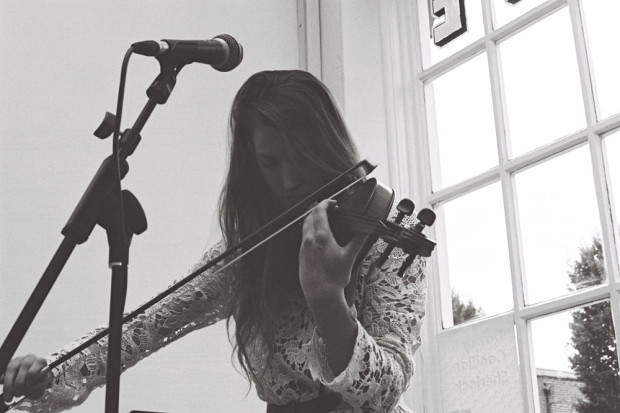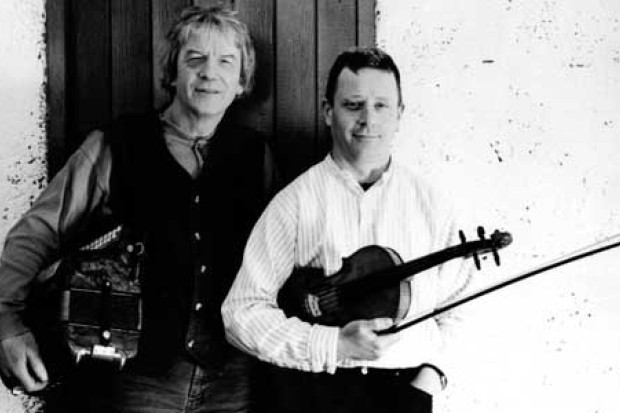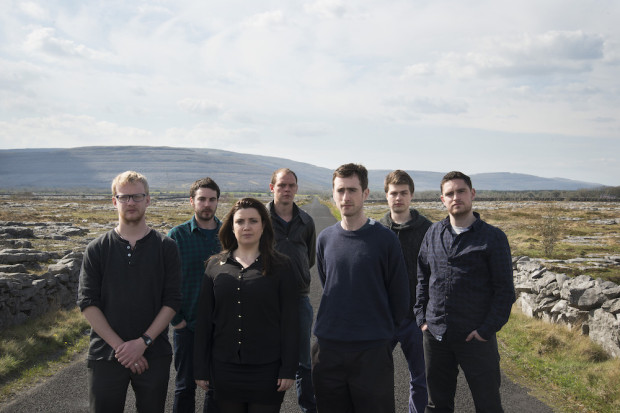A Touchstone for the Tradition
The Willie Clancy Summer School is an event which takes place in Miltown Malbay during the first full week of July each year. It consists of lectures, recitals and classes in the core instruments of Irish traditional music as well as in dancing and singing. It was started as an act of love and commemoration for the late Willie Clancy – piper, singer and dancer – who died in 1973, and it has been held every year since his death. Over the years it has grown to become the most important single event in the traditional music year. Participants can avail of instruction (direct and by way of lecture and recital) from the most respected tradition bearers and this opportunity attracts an attendance from every corner of the globe.
The authors of this book, each a regular and long-time visitor to Miltown Malbay, have set out to capture in words and images the essence of the School, and to convey something of the powerfully generous ethos which permeates it. They have also analysed the context of the School in its musical, social and economic aspects, so that one is given an understanding of the reasons it was founded, of why it developed as it did, and of the other directions it could have taken.
There are really two books within these covers. One is a simple day-by-day series of word-pictures of the activities in the various classes around the town during the week. The atmosphere at the classes is sketched in light strokes as the teachers and students are recorded in conversation, struggling with their instruments or tunes or simply exchanging the lore of the music. On the one hand, the image that emerges is of a group of musicians, dancers and singers who are steeped in their folk tradition and whole-heartedly committed to passing it on in an un-compromised way, and on the other, of a huge group of students who are learning from their teachers far more than they realise. Although run so as to be a financially viable operation, from the perspective of the participants the School is a non-commercial event. The teachers are effectively doing the job for the love of it, and would probably say that they are repaying a debit of generosity to those of an earlier generation who were, in their day, as open with the music. Their remuneration is nothing like the market rate for a week’s work, and this allows the class fees to be set at modest levels. This ‘voluntarist’ attitude on the part of the teachers produces a community of regard between all levels and engenders a resolutely non-commercial ethos that cannot help but inform the students’ attitude to the music.
There is one aspect that the authors touch on only lightly and which needs attention. This is the issue of the fragmentation of the tradition into disjointed disciplines, so that fiddle students want to hear only fiddle-playing, pipers piping and singers singing, and the dancers, generally, do not want to hear anything to which they can’t batter out their brains. Of course not all the students are like this, but there are signs enough that a considerable number are affected with this atomised view of the music.
This is particularly ironic in view of the fact that Clancy himself was a dancer, played the fiddle, flute and whistle as well as the pipes, and was as likely, when in company, to sing a song as to play a tune. His music making was always as much for the company he was in as for himself. It would be a sad outcome if the School bearing his name was to end up turning out generations of musicians for whom personal gratification is the be-all and end-all of music, and for whom their company matters nothing.
Some teachers make it their business to give their students a rounded view of the whole tradition by bringing performers from different disciplines into their classes, and instances of this are recorded in the book. However a lot more needs to be done in this regard to avoid producing musicians who regard the dance-music as too good for dancers, and songs as good opportunities to visit the toilet. The other ‘book within the book’ consists of the chapters that are interspersed with the daily log of the class activities. Comprising by far the larger part of the book, these chapters deal with the background of the School – geographical, political, musical and sociological. There is fascinating material here, including the nitty gritty of the opening years of the School and the attempts by Comhaltas Ceoltóirí Éireann (CCÉ) to rule out any participation in the running of the event by Na Píobairí Uilleann (NPU). In the event, the authors record how NPU remained to provide significant support and continue to do so to the present.
I must declare an interest here. I am an employee of NPU and have been a member since 1969. I am also a co-founder of Brook’s Academy, the set-dance club which also assists in the WCSS and is referred to in the book, and I am happy with the pictures painted (by outsiders) of both groups. As well as the impact of these organisations, the crucial role of several individuals is highlighted. Along with the committee themselves the authors note the significant contributions from, among others, Séamus MacMathúna, Breandán Breathnach, Bríd O’Donoghue and Joe O’Donovan. More mention might have been made of former committee member Tom Munnelly’s various initiatives towards broadening the scope of the School over the years, including the introduction of set-dance classes (by now the biggest and most cost-effective component of the School).
He was aware that Breandán Breathnach had tried to get a set-dance class going in Dublin in 1981 (an effort that was frustrated by the non-appearance of the dancers who were to teach) and mentioned to me at the time that he intended to get the WCSS to try the same thing. The suggestion was not immediately perceived as a good one, and there was the some concern at the potential financial risks of the initiative. Nevertheless, with the rapid decline in traditional set dancing at the time (difficult to believe today!) he felt that the School should engage in arresting that decline and suggested the introduction of set dancing to its curriculum.
I cannot avoid mentioning a couple of irritating features. A book like this really needs an index, and it is surprising that the publishers did not see fit to include one. It is fairly obvious also that the publisher did not treat the text in a professional manner.
A good editor would have eliminated the various small errors. Also, for a specialised work like this, the publisher should have obtained the services of an expert reader. For instance, I don’t for a moment believe that either of the authors think that Turlough Carolan was a piper, but on page 48 he is promoted to that status. On page 59 there is a reference to Swedish piper Thomas Johnson’s ‘Bb’ chanter. I know they mean a B flat chanter, because ‘BB’ is a type of small calibre ball ammunition for pellet guns, but I found the idea of a ‘Bb chanter’ absolutely irresistible and I’m gonna get me one. Several names are mis-spelled: Tom Crean (not Crehan) ran the Tradition Club, Jerry (not Gerry) O’Reilly is one of the set dance teachers and Philip (not Phillip) King makes TV programmes. These mistakes, while annoying, are minor and are made up for by the quality of the printing, layout and picture reproduction, which is very high. The photographs, by Tony Kearns and others, are a significant feature of the work. With over sixty of them spread throughout the book, they provide illustrations to the text and, in their own right, convey the atmosphere of the School.
I hope that every present and potential student at the WCSS might read this book. As we get further removed from the School’s beginnings there can be a tendency to treat it as an eternal ‘given’. Anyone using a hard-built resource should be aware of the struggles and effort that went into its provision. Even at the WCSS one occasionally sees the crass behaviour of the ‘stamp-collector’ mentality. I’ve seen dancers hang around Johnny O’Leary and friends just long enough to get their set in and then vanish, and singers visit Marrinan’s singing session and remain just long enough to get a song in before heading off to collect more experiences. Not for such as these the civility of listening to those who have played for, or listened to, them!
I was one of the party that visited Miltown in December 1972 to spend a long weekend in Willie’s company, and I well remember the hours spent just enjoying that company. The music and songs were almost a bonus – more than anything else we absorbed an attitude to the music. The stamp collectors might find in this book a clear articulation of the generous, open attitude that Willie Clancy epitomised, and which is carried on by the School’s teachers. For the reader who has never participated in the School, you have here an insightful comprehensive account of its past, present and probable future. I’ll eat my hat if it doesn’t make you wonder whether you shouldn’t maybe give it a go.
Tony Kearns and Barry Taylor, A Touchstone for the Tradition: The Willie Clancy Summer School, Brandon, 2003, ISBN 0 86322 308 7, Price €22.50
Published on 1 July 2003
Terry Moylan is a researcher and archivist with Na Píobairí Uilleann. He is the author of The Age of Revolution in the Irish Song Tradition 1776-1815.














